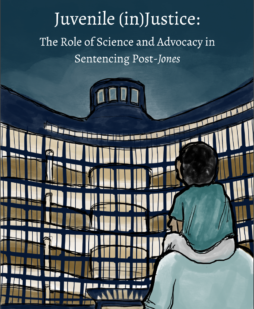
In Fall 2021, law students at Northeastern University School of Law (NUSL) under the direction of Professor Stevie Leahy began investigation into the current state of law and public policy regarding the sentencing of juvenile offenders across the United States. This investigation was prompted by the Spring 2021 decision by the US Supreme Court in Jones v. Mississippi. Many experts consider Jones to signal the end of increasing 8th Amendment protections for juveniles under a series of cases since 2005. In its wake, Jones will now leave the requirements of juvenile sentencing to the discretion of individual courts and/or legislatures. The NUSL students (known as Law Office 7) completed this project in March 2022 and released their analysis and recommendations as Juvenile (in) Justice: The Role of Science and Advocacy in Juvenile Justice Post-Jones. CLBB served as a partner organization for this project, which coincided with their publication of a detailed whitepaper aligning scientific research with prior factors considered by courts in juvenile sentencing. CLBB Executive Director Dr. Robert Kinscherff and Affiliated Faculty Judge Jay Blitzman (ret.) consulted with the students, with Judge Blitzman bringing his nationally recognized expertise in this area. Armand Coleman, Executive Director at the Transformational Prison Project, also provided his guidance and expertise to the students. The research by Law Office 7 confirms that a lack of clarity and specific requirements within juvenile sentencing decisions increases disparities in “justice by geography” when it comes to sentencing outcomes.
Please click here to view the guide: https://drive.google.com/file/d/1KOf3pFJ7ANmT8o47xPowW65vJrejuTxo/view?usp=sharing




